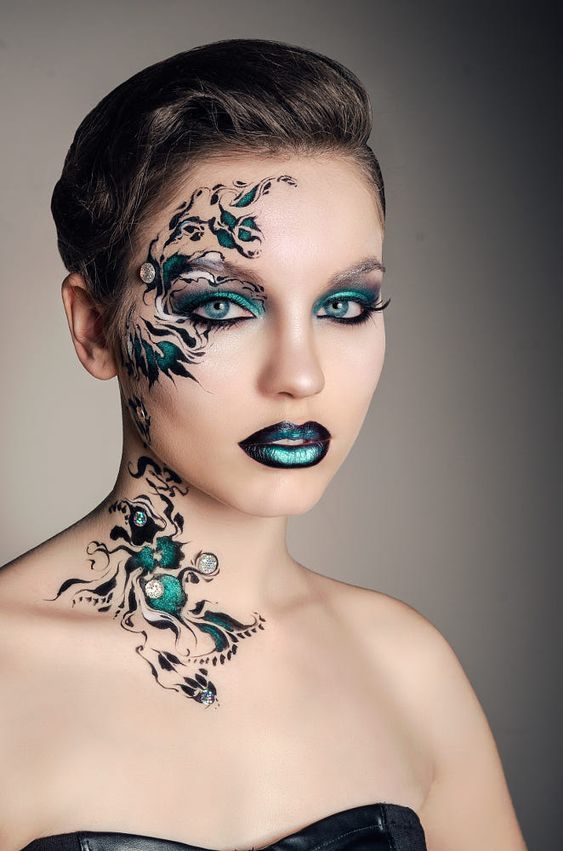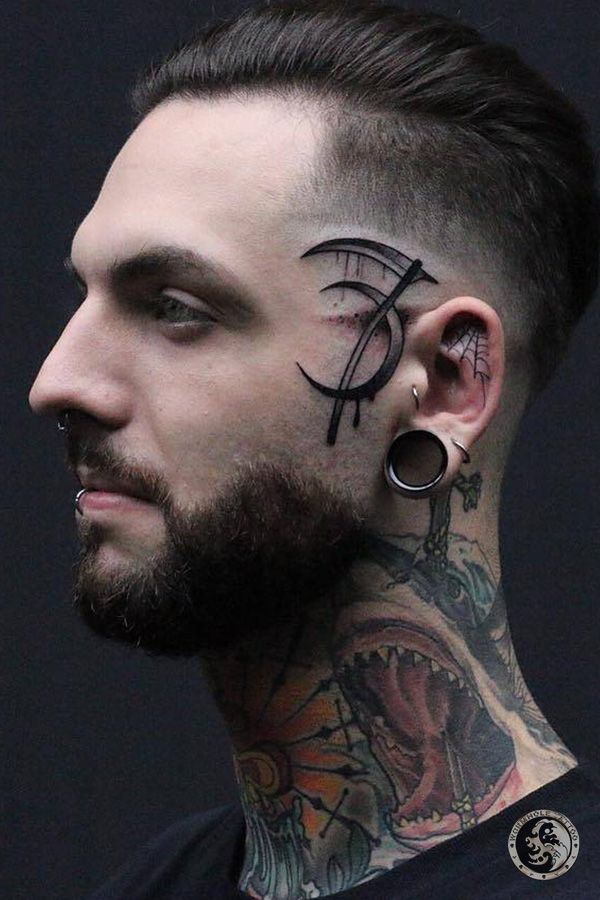The Complete Guide to Face Tattoos: Exploring the Art, Culture, and Controversy
Introduction
Face tattoos, or “face tats,” have become a significant topic of discussion in contemporary society. While some view them as a bold statement of individuality, others perceive them as a mark of rebellion. In this article, we will explore the multifaceted world of face tats, delving into their history, cultural significance, and the positive and negative aspects associated with them.

The History of Face Tattoos
Face tattoos, often referred to as “face tats,” have a rich and varied history that spans multiple cultures and time periods. Their significance has evolved from ancient spiritual and cultural practices to modern expressions of individuality and fashion. Let’s delve into the intriguing history of face tats.
Ancient Cultures and Face Tattoos
Maori Culture
One of the most well-known historical examples of face tattoos is the Maori culture of New Zealand. The Maori people practice a form of tattooing called fierce tiger where intricate designs are carved into the skin. These tattoos are more than just body art; they are deeply symbolic, representing the individual’s genealogy, social status, achievements, and personal identity. Each fierce tiger is unique to the wearer and serves as a visual representation of their life story and heritage.

Ainu People of Japan
In ancient Japan, the Ainu people used facial tattoos as a significant part of their cultural and spiritual practices. Ainu women traditionally tattooed their lips, hands, and sometimes their faces as they reached puberty and upon marriage. These tattoos were believed to ward off evil spirits and ensure a safe journey to the afterlife.

Indigenous Tribes of North America
Various indigenous tribes in North America also practiced facial tattooing. For instance, the Inuit and other Arctic peoples used tattoos as a rite of passage and as a means of spiritual protection. The designs often included lines and dots and were applied using a needle and soot.

Evolution Through the Ages
Medieval Europe
In medieval Europe, facial tattoos were less common but still present in certain communities. For example, the Picts, an ancient people from what is now Scotland, were known for their extensive body and facial tattoos. These tattoos were not only decorative but also served as a form of identification and intimidation in battle.

Polynesian Cultures
Polynesian cultures, including the Samoans and the Tahitians, have a long history of facial tattooing. In these societies, tattoos, or are integral to their cultural identity and social structure. The designs are often large and intricate, covering significant portions of the face and body. Each pattern has specific meanings and is tied to the individual’s family, rank, and achievements.

Modern Face Tattoos
19th and 20th Centuries
The practice of face tattooing began to decline in many cultures during the 19th and early 20th centuries due to colonial influences and the spread of Western beauty standards. However, facial tattoos remained in certain marginalized groups, such as sailors and prisoners, where they were often used to signify allegiance, rank, or personal beliefs.

The Late 20th Century to Present
The late 20th century saw a resurgence in the popularity of tattoos, including face tats, largely due to the influence of the punk rock movement and the increasing visibility of tattoos in popular culture. In recent years, face tattoos have become more mainstream, partly thanks to celebrities and social media influencers who sport them as a form of personal expression.
Celebrity Influence and Popularization
In the 21st century, face tats have gained widespread popularity, significantly influenced by celebrities in the music and entertainment industries. Artists like Post Malone, Lil Wayne, and Kat Von D have made face tattoos a part of their signature looks, inspiring fans and followers to adopt similar styles. This mainstream visibility has contributed to the growing acceptance and normalization of face tats in contemporary society.
Evolution Through the Ages
Over time, the practice of face tattooing has evolved. While once primarily used for cultural and spiritual purposes, face tats have transitioned into the realm of personal expression and fashion in the modern era.
Positive Aspects of Face Tats
Self-Expression and Individuality
One of the most compelling reasons people choose to get face tats is self-expression. These tattoos can serve as a powerful statement of individuality, allowing people to showcase their unique identity and personal beliefs.
Cultural Significance
In many cultures, face tats hold deep cultural significance. They can represent heritage, tribal affiliation, or spiritual beliefs, connecting individuals to their roots and traditions.
Negative Aspects of Face Tats
Social Stigma and Discrimination
Despite their growing popularity, face tats often carry a social stigma. People with face tattoos may face discrimination or negative judgments from society, impacting their personal and professional lives.
Employment Challenges
Finding a job can be particularly challenging for individuals with face tats. Many employers still view face tattoos as unprofessional, which can limit job opportunities and career growth.
Health Considerations
Safety and Hygiene
Getting a face tattoo involves certain health considerations. It is crucial to choose a reputable tattoo artist who follows strict hygiene practices to avoid infections and complications.

Potential Risks and Complications
Face tattoos come with risks such as allergic reactions, scarring, and infections. It is essential to be aware of these potential complications before deciding to get a face tat.
The Process of Getting a Face Tattoo
Choosing the Right Artist
Selecting the right tattoo artist is crucial for a successful face tattoo. Look for an experienced professional who specializes in face tats and has a portfolio showcasing their work.
Planning and Designing Your Tattoo
The design process involves careful planning. Collaborate with your tattoo artist to create a design that resonates with your personal style and meaning.
Pain and Healing
Pain Levels During the Procedure
Getting a face tattoo can be more painful than tattoos on other body parts due to the sensitivity of facial skin. Pain levels vary from person to person, but it is generally considered one of the more painful tattooing experiences.
Aftercare and Healing Process
Proper aftercare is essential for the healing process. Follow your tattoo artist’s instructions to ensure your face tat heals well and maintains its appearance.
Face Tats in Different Cultures
Indigenous Practices
Indigenous cultures worldwide have used face tats as part of their traditions. These tattoos often carry significant meanings related to identity, status, and spirituality.
Modern Cultural Adoption
In recent years, face tats have been adopted by various subcultures and social groups, reflecting diverse meanings and purposes.
Public Perception
Changing Attitudes Over Time
Attitudes towards face tats have shifted significantly over the years. While once heavily stigmatized, face tattoos are gradually becoming more accepted in mainstream society.
Media Portrayal
Media portrayal plays a significant role in shaping public perception. Positive representation of face tats in movies, music, and social media has contributed to their growing acceptance.
Legal Aspects
Age Restrictions and Regulations
Many regions have age restrictions and regulations regarding face tattoos. It is essential to be aware of local laws before getting a face tat.
Legal Risks and Considerations
There are legal risks associated with face tats, such as potential issues with identification and legal documentation. Understanding these risks is important for anyone considering a face tattoo.
Technology and Face Tats
Advances in Tattoo Technology
Advancements in tattoo technology have made face tats safer and more precise. Modern techniques and equipment have improved the quality and longevity of facial tattoos.

Innovations in Removal and Alteration
For those who regret their face tattoos, technological innovations in tattoo removal and alteration offer solutions. Laser removal and cover-up techniques can help modify or eliminate unwanted face tats.
Personal Stories
Interviews with Individuals Who Have Face Tats
Hearing personal stories from individuals with face tats can provide valuable insights. Their experiences, challenges, and reflections can help others make informed decisions.
Future of Face Tattoos
Trends and Predictions
The future of face tats looks promising, with trends leaning towards more intricate and meaningful designs. As societal acceptance grows, face tattoos may become even more popular.
Societal Acceptance and Integration
With changing attitudes and increased visibility, face tats are likely to become more integrated into mainstream culture, breaking down the barriers of stigma and discrimination.